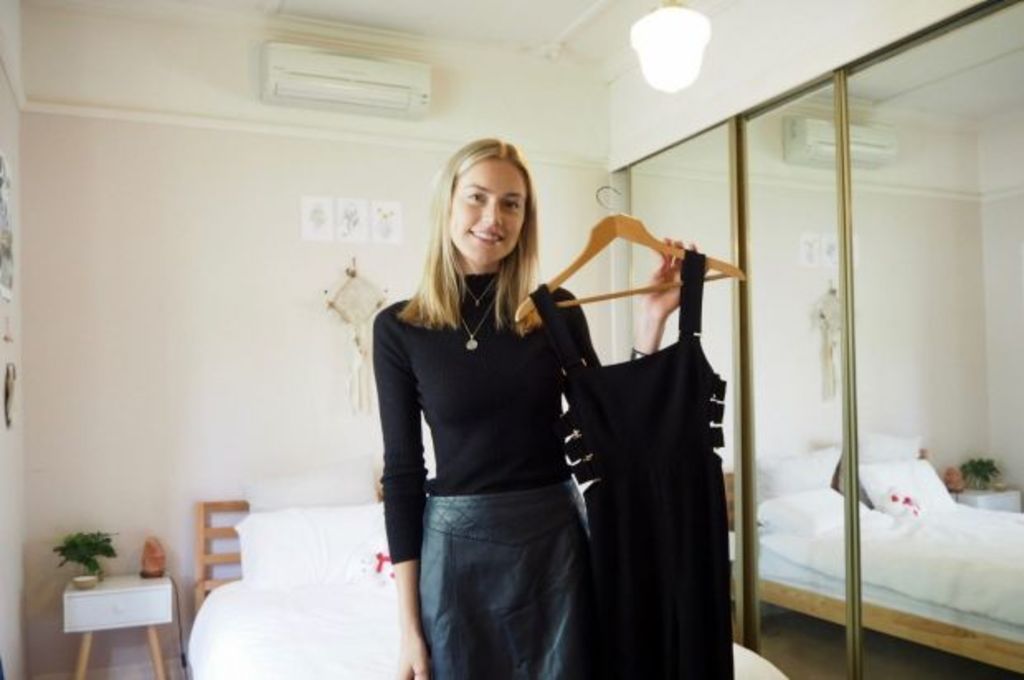‘The Airbnb of fashion’: How leasing clothes can save space and make you money

Would you lease your clothes to a complete stranger? It might sound risky, but this is the concept behind several new online platforms targeted at young Australians interested in saving valuable money and storage space at home.
While clothes renting isn’t entirely new (companies like GlamCorner and Her Wardrobe have been operating for several years now), recent additions to the marketplace are disrupting the industry by offering a peer-to-peer service model.
This means garments are sent directly from loaners to renters – not from a business’ warehouse.
“We are the Airbnb of fashion. Dress rental is nothing new but we have taken the concept one step further on our site, which allows everyday Australians to post their luxury items for rent, making money from their existing wardrobe,” says Kym Atkins, co-founder and CEO of The Volte which launched in January this year.
4000 designer garments are currently listed on the site, ranging from sizes four to 20 and costing between $30 to $2000 to rent.
Student Lily Collins, 22, from Richmond has been using The Volte to rent out her clothes for the past four months. She currently has five pieces listed, generating about three bookings every weekend and a total of $2000 to date.
“My apartment is very small, so renting definitely helps save space in my tiny wardrobe,” Collins says.
“[The income] easily covers the costs of the purchase of the dresses I own … I use it for extra spending money and some living expenses.”
The Volte is among a handful of similar websites and apps adopting the peer-to-peer model, each with a slightly different offering that distinguishes them.
The average transaction value across all platform is about $60 to $100.
Invite-only clothes renting app HUMM. is differentiated by a $5 insurance fee charged to all renters in the case of damage.
“We allow women to monetise their closet without the worry of their favourite pieces being damaged or stolen,” says Mackenzie Casey, founder of HUMM.
Chessie Keebaugh, 23, from Malvern started renting pieces out through HUMM three months ago after being approached by her followers on Instagram.
“Girls would message me or comment on my Instagram pictures to borrow clothes off me and then we would determine a cost and length of borrow in our messages,” Keebaugh says.
“HUMM is a much safer way of renting as it allows there to be a middle man who can serve as a mediator if something were to go wrong with the clothing.”
Depending on her activity on the app, Keebaugh says she earns between $350 and $1000 a week from renters.
Sydney-based website Designerex calls itself “the only secure designer clothes sharing platform”.
“It enables renters and lenders to utilise leading trust and security features such as real-time ID verification which scans drivers licences and passports for legitimacy,” says Kirsten Kore, co-founder of Designerex.
“Unlike selling, which is limited, lending is ongoing and can make a dress profitable over time. Shopping for designer dresses is no longer about ‘how much it costs’, but about ‘what return could I get.'”
Designerex user Kate Johns, 39, uses the site as both a renter and loaner, making her activity on the platform a “cost neutral” exercise.
“It also offsets the cost of the dresses themselves, which I can then reinvest in renting other dresses for different events,” Johns says.
“The other advantage is the space-saving, decluttering side of clothing rental. My wardrobe is far more organised and there is more space in there now.”
For those without the time to list and manage their rental clothing listings ongoing, businesses such as LendMyTrend also offer concierge services to do this on consumers’ behalf.
For example, through LendMyTrend’s “LMT Collective”, customers can have their items professionally photographed, profiled, maintained and managed to save busy loaners valuable time.
The latest addition to the peer-to-peer clothes renting market is Outdress – a completely free, self-funded app.
Outdress encourages items beyond designer dresses to be listed, such as children’s clothes, men’s suits, snow gear and costumes.
“Unlike our competitors, we don’t take a commission on rental transactions … We did this intentionally, to encourage Australians to start sharing their wardrobes,” says John Tilley, co-founder of Outdress.
“The fashion industry is having a huge impact on our environment. The ABS reports 500,000 tonnes of textiles and leather end up in landfill in our country every year …They’re harrowing statistics which are quite disturbing, but now, we can all make a difference by utilising a free sharing platform like Outdress.”
Domain readers interested in joining HUMM. can do so by using the invite code “DOMAIN”.
States
Capital Cities
Capital Cities - Rentals
Popular Areas
Allhomes
More







